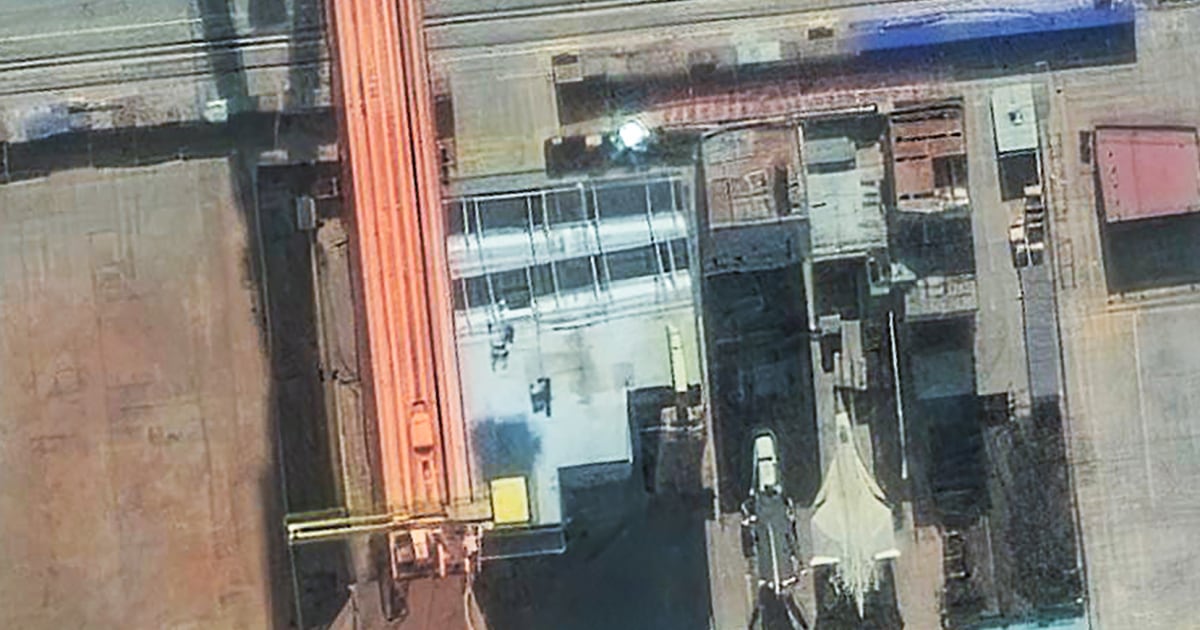China is working on an enormous aircraft carrier that rivals the biggest in the U.S. fleet, analysts say
Story by Matthew Bodner
• 6d•
Images suggest a new ship design unlike anything now in China's navy, five analysts told NBC News.

www.nbcnews.com
It already has the world’s largest navy, but new satellite imagery shows that China is developing a huge nuclear-powered aircraft carrier that would rival the biggest vessel in the American fleet, five analysts told NBC News after studying new satellite imagery.
The images of China’s Dalian shipbuilding facility in northeast China suggest that the new ship will allow fighter jets to be launched from four parts of the flight deck, leading analysts to conclude that the images suggest a new ship design — unlike anything now in the Chinese fleet.
The analysts made the assessment after examining images provided to NBC News by Maxar Technologies, a defense contractor headquartered in Colorado used by the U.S. government.
China’s three current aircraft carriers have the capacity to launch jets from only three parts on the front and the waist, or center, on the deck. Its latest supercarrier, the recently launched Fujian, a Type 003, has three electromagnetic catapult launching systems to propel fighter jets, said Michael Duitsman, a researcher at the James Martin Center for Nonproliferation Studies, a California-based nongovernment organization devoted to curbing the spread of weapons of mass destruction.
The United States has 11 supercarriers that can launch from four places.
“We think this is them testing equipment and layouts for the upcoming Type 04 carrier,” Duitsman said in a video call this week.
The general consensus, he said, is" that the new carrier will have four catapults,” which would allow more planes to take off and match U.S. carriers like
the USS Gerald R. Ford, the Navy's largest and most advanced aircraft carrier. To accommodate four catapults, the ship will need to be larger than the Fujian, matching American tonnage and powered by a nuclear reactor.
The satellite images of China’s Dalian shipbuilding facility in northeast China show an engineering prototype of a module with two tracks, or trenches.
These tracks “obviously are related to catapults,” said H.I Sutton, an independent naval analyst based in the U.K. “But this is not the actual carrier under construction. Instead what it suggests is that the yard is gearing up to produce carriers,” he said in a telephone interview last week.
Snow reveals two tracks for an aircraft catapult during assembly at the Dalian Shipyard in Liaoning, China, on Dec. 12, 2023.© Maxar Technologies
China has not acknowledged it is developing a new supercarrier, and Liu Pengyu, a spokesperson for the embassy in Washington, had no comment when asked about the new design. He said that the country’s national defense policy is “purely defensive in nature.”
The United States has nonetheless made no secret that it sees China as a priority. Secretary of Defense Pete Hegseth told NATO leaders this month that they should take up more of the security burden in Europe to free up American firepower.
He said the United States faced a “peer competitor in the communist Chinese, with the capability and intent to threaten our homeland and core national interests in the Indo-Pacific.” He added that the United States was “prioritizing deterring war with China in the Pacific.”
Duitsman said it was not unusual to see the Chinese build experimental sections of a new ship before committing to final construction, and similar efforts were seen years before the keel was laid for the Fujian, the first carrier to be designed entirely in China.
The two tracks seen in the latest satellite images run at convergent angles, matching the general configuration of American supercarriers that have four electromagnetic catapults — two running parallel on the bow and two on the waist, the analysts concluded. Because of space constraints on the flight deck they do not run parallel, but converge.
One reason this particular section of a presumed Type 004 carrier would warrant prototype builds is the electromagnetic catapults themselves, according to Seth Hosford, another researcher at the James Martin Center.
First deployed by the United States on the Ford-class carriers, these catapults are attached to a plane’s nose, rapidly propelling it forward and allowing it to take off. This is achieved essentially with large magnets, as opposed to steam pistons used on older American carriers.
The USS Gerald R. Ford aircraft carrier.© U.S. Navy via Getty Images file
The Fujian uses this technology for its two bow-mounted catapults, but those are spaced quite far apart and Hosford said that the magnetic fields from those two catapults are less likely to interfere with each other.
The module seen in Dalian has the two tracks quite close together, and Hosford said that “if you have the electromagnetic catapults essentially intersecting, you could run into all sorts of issues.”
The satellite photos out of Dalian are not the first signs that China is moving toward building a nuclear-powered supercarrier to rival those fielded by the United States.
In November, a group of analysts at the Middlebury Institute of International Studies, which the James Martin Center is part of, published satellite evidence that China has already built a prototype naval reactor for a large surface warship. In the modern age, only supercarriers warrant such a power system.
China itself has made no secret of its ambitions for a so-called blue-water navy to rival the United States and has been pursuing carrier development for several years.
After refurbishing and then building a copy of the Varyag, a former Soviet carrier China purchased from Ukraine, China built the Fujian, a large carrier that is just below supercarrier class in size and armament but features many of the trappings of the United States' nuclear-powered supercarriers.
Ni Lexiong, a Shanghai-based military analyst, said Friday that the country “should have no problem striving for one or two nuclear-powered aircraft carriers,” although he questioned whether it was still necessary in the era of artificial intelligence. “Unmanned aircraft carriers with a focus on drone attacks may become the main weapon of the future navy,” he said.
Liu, the Chinese Embassy spokesperson, insisted his country would “never engage in aggression and expansion, but we will never give up our legitimate rights and interests, and we will resolutely counter all threats and challenges.”
“China has always adhered to the strategy of self-defense and does not engage in arms race with any other country,” he said, adding that it had “always taken concrete actions to safeguard world peace and inject stability and certainty into the world.”











































